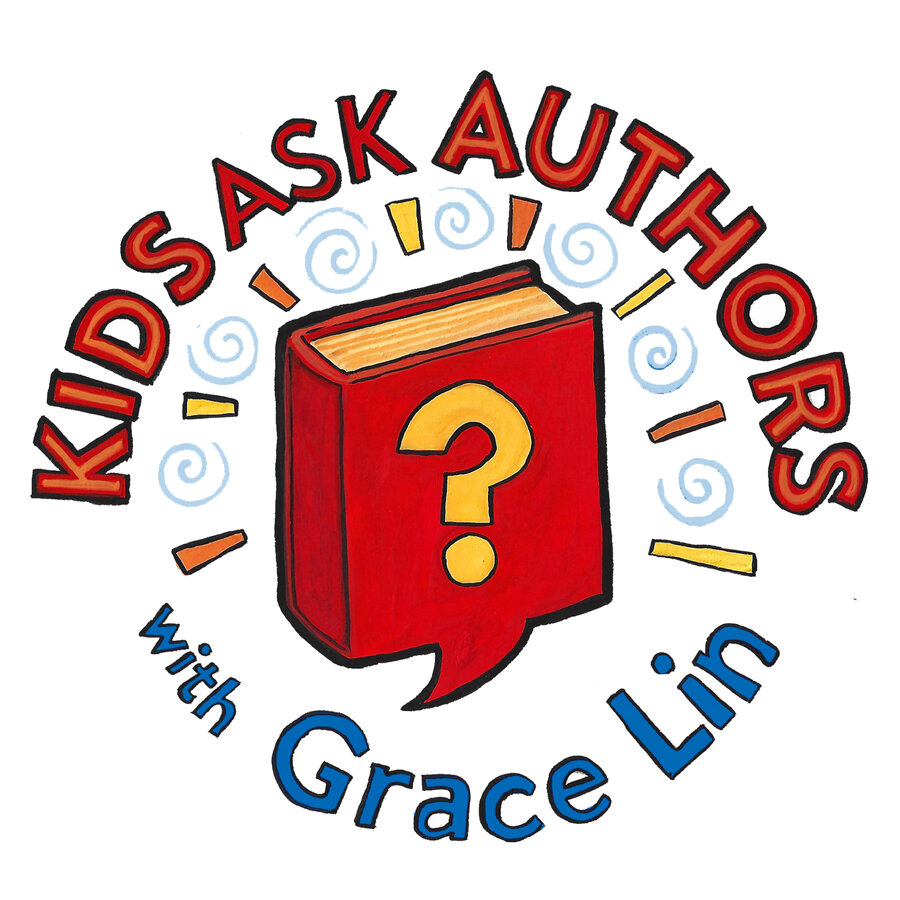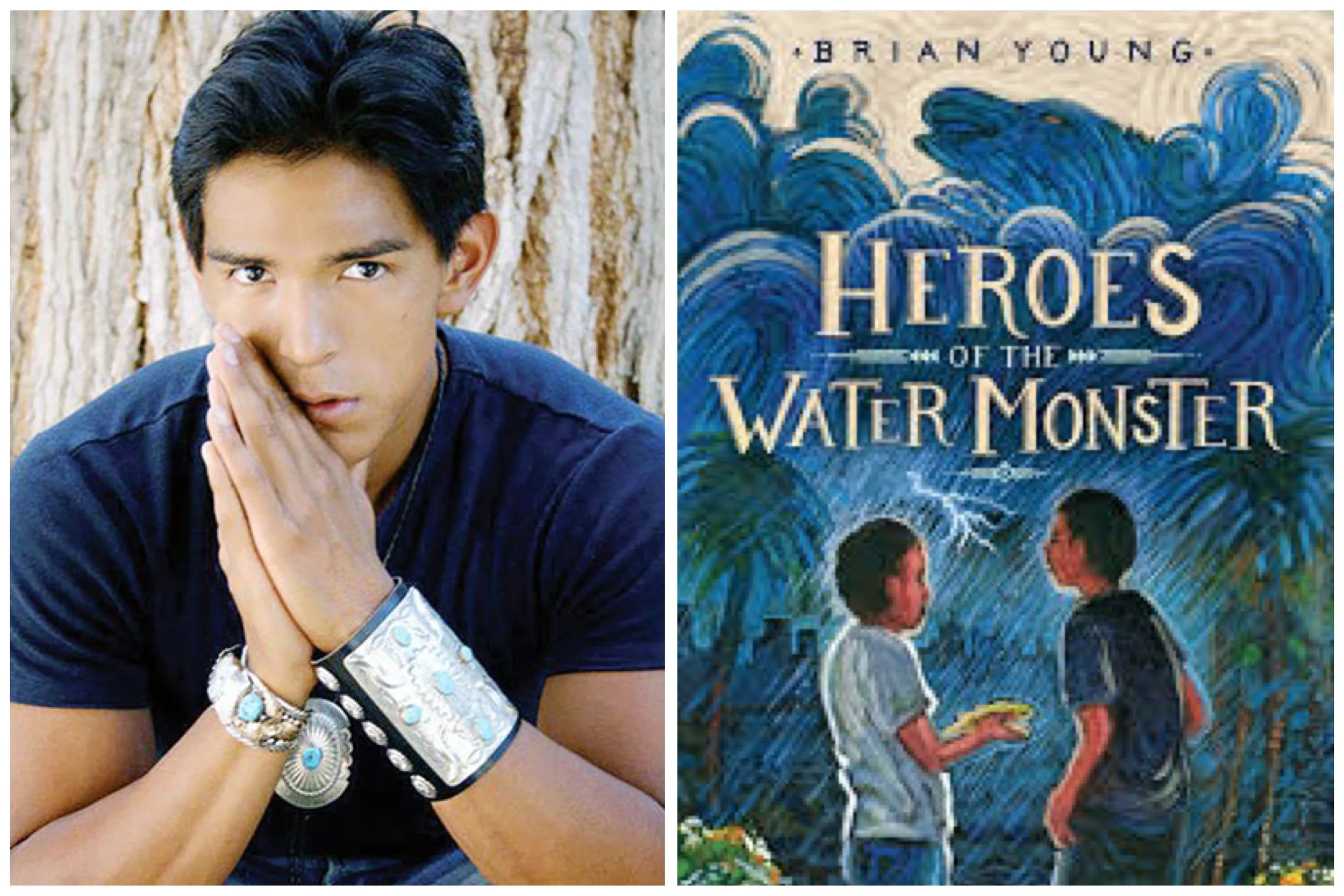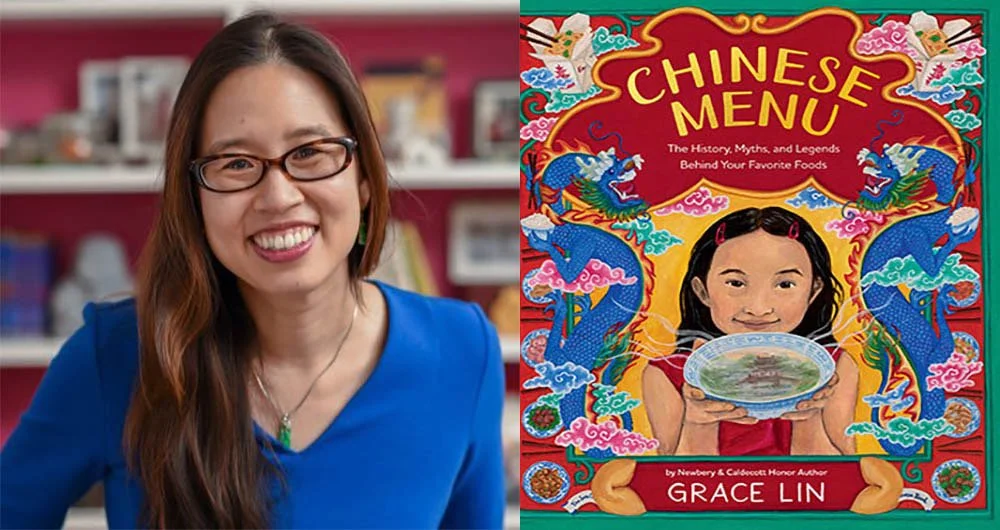Episode #168: How long did it take for you to write your book? -with Brian Young
TRANSCRIPT:
Grace Lin: Hello. I'm Grace Lin, children's book author and illustrator of many books, including the middle-grade novel Where the Mountain Meets the Moon, and the picture book A Big Mooncake for Little Star.
Today, I am here with Brian Young, the author of the middle-grade novel Healer of the Water Monster, and the upcoming illustrator of Children's Young, the author of the middle grade novel, Healer of the Water, Monster, and the upcoming Heroes of the Water Monster which will be available in May 2023.
Welcome, Brian.
Brian Young: Thank you. Thank you so much for having me.
Grace Lin: Oh, I'm so glad you're here. Are you ready for today's kid question?
Brian Young: I am so very ready.
Grace Lin: Okay. Today's question is from a kid named Gia. They ask, "How long did it take for you to write your book?"
Brian Young: Well, Gia, it took me about seven long years to write Healer of the Water Monster. That's a very long time. It started off as a dream that I had when I was living in Albuquerque working as a meat cutter at Whole Foods. Part of the reason why it took me so long to get it published and into the form of a book was because I didn't know how to write a book. For the first two, three years, I had written the first few drafts of Healer of the Water Monster, but I was having trouble getting an agent, and so I decided to pursue a master's degree program and learn how to write a book because I did not know how to write a book, and that took another three years in total to get my Master's of Fine Arts in Creative Writing at this wonderful school called Columbia University in the most amazing place in the world, New York City. That's why it took me seven years is because, three of those years, I was learning how to write.
Grace Lin: Wow. That is a great, great story especially for our listeners who sometimes are really surprised that it takes more than a year to write a book. Tell me what are some of the things that you learned while writing a book during those three years at Columbia, just one tip that maybe our listeners might want to know.
Brian Young: I think, for me, the most valuable lesson I learned in my program was how to evoke the inner thoughts of my main character. I graduated from an undergraduate career in film. I'm actually a filmmaker as well, and part of my troubles as a book writer was I was writing a book using screenwriting and film techniques. A lot of my professors kept telling me that a lot of the action was external and no one knew the internal feelings of any of the characters, and so that was a huge revelation to me and realization that there was this space in books that isn't easily available in movies is you can describe the emotions and the reactions of your characters.
That was one of the biggest lessons I learned, and also another thing I learned was that there's a lot of freedom in books that isn't available in films because, when you're writing scripts and screenwriting, I was very aware of how much it would cost to make a scene. With screenwriting, you described the scene, the characters, and they had their dialogue and their interactions. When I'm writing a script, there's always that producer-director portion of my brain saying, "How and where is this going to be filmed and how much is this going to cost?" That was always a weight in the back of my mind.
That was always a concern and, especially when writing something like Healer of the Water Monster where there's a lot of holy beings and there's a lot of myth-inspired beings interacting with everyday characters, that scared me because that meant I'm going to have to raise a lot of money if I want to make this into a film. When I started writing it as a book, all my fears and all my anxiety disappeared because I could take you to these wonderful places and I can have you interact with these holy beings that I grew up with as a kid and not worry about the financial aspects of bringing them to life. I could bring them to life with words much, much, much easier and much, much faster.
Grace Lin: That's really, really amazing. I loved the first part of your answer where you were saying how you were looking at the character's inner thoughts and inner feelings. I thought that's true. That really shows how the value of what a book can do versus what a film and a movie can do. That shows the value for the reader and then, the second part, I felt like it shows the value for the author or the creator. It's like, oh, yeah, that's true. I never really think about that when I'm writing a book like, "How much is this going to cost?" because it probably would cost a lot of money to do some of the scenes that I imagine.
Before I talk about other things, I wanted to also touch back, you said that the idea for this book came from a dream while you were working at a meat counter. Was that correct?
Brian Young: Yes. I was working as a meat cutter in Albuquerque, New Mexico.
Grace Lin: What was the dream?
Brian Young: It was the absolute last chapter of Healer of the Water Monster. For those of you who have yet to read my book-
Grace Lin: Spoiler alert.
Brian Young: Spoiler alert, my dream that inspired Healer of the Water monster was of a young Navajo boy, and he was playing with his portable video game system and, during the time of the dream, the 3DS was very popular and in its prime. The dream I had was eventually going to be Nathan, Nathan playing with his 3DS, and then he just stops playing with it and then he runs through a cornfield and out into the nearby Navajo desert and he meets up with a small, little lizard, and they started to sing and, almost immediately, it starts to rain. That image, just really, I fell in love with it, and I'm still in love with that image because it speaks to a lot of things that a lot of native kids themselves interact and deal with.
We are often told that we live in two worlds, modern and traditional, and that dream and that kid, who would eventually become Nathan, was that bridge between those two worlds. He was the epitome of interacting with technology, the 3DS, and he was knowledgeable in what I assumed to be a traditional song that would cause the rains. He was this symbol of two worlds coexisting within a young boy. There was so much to love in that image.
Grace Lin: That's awesome. I love that. Oh, now I'm so excited. I'm so excited for our listeners to read your book. I think, even with that spoiler, I don't think it spoils it too much. It's fascinating that you talk about one image being the impetus of the whole novel because that actually happened similarly to me for my book, Where the Mountain Meets the Moon. The cover of that book is an Asian girl flying on a red Chinese dragon. I remember I drew and painted that image years and years before I ever wrote that book, and it was just stuck in my head over and over again. It was like a little reminder every once in a while of like, "You should write a story for this. You should write a story for this."
In some ways, you could say that, all books, the seeds are planted so early. Seven years is not unheard of, though you do have me be because I do have one book that I often tell kids took me the longest to write so far, and that is my book When the Sea Turned to Silver. That one, I tell them, took me six years to write, but you have me beat by seven years.
Brian Young: These take a while. These takes a while.
Grace Lin: They do, and it always makes me laugh because the kids will come up and say, "I read your book in one day or two weeks," and I was like, "It just took me six years to write that." That's always such a joy though when they say that because it just shows how much they enjoyed it, and it was worth the six years, and hopefully, in your case, the seven years
Brian Young: I think so. I'm very happy with how it turned out.
Grace Lin: Awesome. All right. Well, thank you so much, Gia, for asking this question, and thank you, Brian, for answering it.
Brian Young: Yes. Thank you, Gia. That was a wonderful question.
More about today’s authors:
Author and filmmaker, Brian Young is a graduate of both Yale University with a Bachelor’s in Film Studies and Columbia University with a Master’s in Creative Writing Fiction. An enrolled member of the Navajo Nation, he grew up on the Navajo Reservation but now currently lives in Brooklyn, New York. As an undergraduate, Brian won a fellowship with the prestigious Sundance Ford Foundation with one of his feature length scripts. He has worked on several short films including Tsídii Nááts’íílid – Rainbow Bird and A Conversation on Race with Native Americans for the short documentary series produced by the New York Times. He was a participant of the 6th Annual Native American TV Writer’s Lab with the Native American Media Alliance, where he learned to write Television Scripts.
Grace Lin, a NY Times bestselling author/ illustrator, won the Newbery Honor for Where the Mountain Meets the Moon and her picture book, A Big Mooncake for Little Star, was awarded the Caldecott Honor. Grace is an occasional commentator for New England Public Radio , a video essayist for PBS NewsHour (here & here), and the speaker of the popular TEDx talk, The Windows and Mirrors of Your Child’s Bookshelf. She is the co-host of the podcast Book Friends Forever, a kidlit podcast about friendship and publishing (geared for adults). Find her facebook, instagram , twitter ( @pacylin) or sign up for her author newsletter HERE.
Thank you so much for tuning into to Kids Ask Authors!


